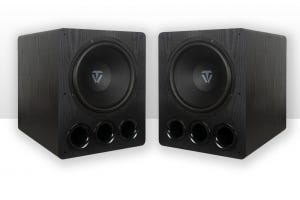
Soundbars have quickly become extremely popular hi-fi audio options for the casual home entertainment system. They offer a great way to improve the audio quality of your TV without investing in a multiple speaker system. While soundbars are no replacement for surround sound systems, they offer excellent audio quality at an affordable price. The role of the soundbar should never go under-appreciated, and we've already discussed the process for finding the right soundbar that suits your needs. Here we'll talk about what goes on inside a soundbar that makes it able to produce such high quality audio in such a compressed package.
Outer Design
Before getting into the inner mechanisms, we'll start with the exterior. Altec-Lansing created the very first soundbar in 1998. With all hi-fi audio systems requiring at least 2-3 speakers and an amplifier or receiver, the purpose in creating the soundbar was simple: produce high quality audio from a single source. The best design to accomplish this is a thin, wide "cabinet" of sorts that encloses multiple loudspeakers within it.
Thus, you have a soundbar. They can range anywhere from 22 inches to 60 inches in length. Another key feature of a soundbar's exterior is the cloth material that covers the front. This material, known as speaker mesh, acoustic cloth, or grille cloth is designed to allow the sound to easily pass through while concealing the inner mechanisms of the speaker. This material also plays into the aesthetics of the soundbar; the non-reflective material give sit a sleek look that blends in with its surroundings.
What's in a soundbar?
In order to produce a full range of frequencies that typically requires a full speaker system, the inside of a soundbar actually contains many different speaker types: tweeters, mid-range drivers, and woofers.
Tweeters are the smallest type of speaker, typically only 1 to 2 inches in diameter. They are designed to produce the high range of frequencies, such as cymbals, high-pitched percussion, screams, or the sharp "s" sounds in dialogue.
Mid-range drivers cover the middle frequency range, and can range from 2 inches to almost 7 inches in size, depending on the application. Mid-range typically includes what most would think of as the "meat" of the audio, with harmonic and melodic instruments like guitar, piano, and most vocals. Most dialogue and sound effects heard in movies will come through the mid-range drivers as well.
Woofers and subwoofers cover the low range of frequencies, and are the largest of the three speaker types, ranging from 3 inches all the way up to 16 inches in their own cabinet. Kick drum and bass frequencies are the load of the woofer, as well as deep, booming sound effects like explosions or rumbling thunder.
Some soundbars feature passive radiators, which are not speakers themselves, but amplify the signal of another speaker in order to simulate having two speakers rather than one.
The many speaker components are typically located on the far ends of the soundbar and slightly angled, in order to mimic the experience of having left and right speakers. In addition to the actual speakers, there are many sound processing components that play an important role in the quality of sound produced:
- HDMI Interface: To allow for HDMI compatibility, the HDMI module interprets video and audio signals and distributes the information into the video stream and digital audio track.
- ADC: An analog-to-digital encoder allows for compatibility with analog inputs, converting analog signals to digital signals that can be easily decoded in the soundbar.
- Surround Decoder: This component receives surround sound signals and converts them to individual channel components that are sent to their corresponding speakers (left, right, centre, and subwoofer signals).
- Virtual Sound Processor: This processor takes the decoded digital signals and generates a virtual surround sound presentation, which helps with the environmental placement of sounds as you hear them.
- Digital amplifiers: Digital amplifiers save space to allow for the compact design, offering high energy efficiency and minimal heat production.
- Radio receivers: Many soundbars feature radio transmitters and receivers as well, including Bluetooth receivers and Wi-Fi radios to allow soundbars to connect to your network and other devices easily. These are also often used for clean wireless connection to a compatible subwoofer.





